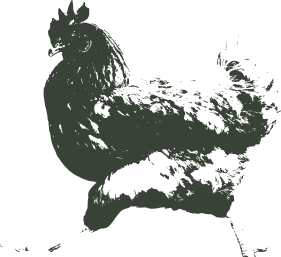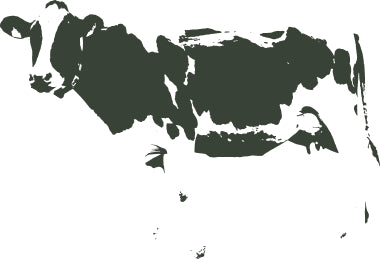Frequently Asked Questions
Not sure about something? Have a look at our FAQs. Still not sure,
give us a call or email us. We are here to help.
Food related queries
-
Is it safe to feed my dog raw meat?
Absolutely - feeding dogs a raw diet is as natural and as healthy as it gets.
Their digestive systems are perfectly designed to process a raw food diet. Dogs have no digestive enzymes in their saliva (unlike us) – instead they have very large, expandable stomachs with incredibly potent digestive acids to assist with the passing of bacteria and pathogens, without any health concerns.
When food is cooked, its structure is altered and up to 70% of the nutritional value (certain vitamins, minerals and antioxidants) is lost for dogs.
-
What does BARF or ‘species appropriate’ mean?
BARF is short for ‘Biologically Appropriate Raw Food’ or ‘Bones And Raw Food’ (both have the same meaning).
A biologically appropriate, or ‘species appropriate’, diet for a dog is one that contains whole foods similar to those eaten by their wild ancestors and in the same raw form.
This diet will include muscle meat, bone, fat, organ meat, vegetable and fruit that mimic what dogs would naturally thrive on in the wild.
-
How long can I keep your food?
As soon as our food is made, it is snap frozen to lock in the freshness, before being delivered to your door (still frozen).
Because we don’t use any preservatives, we recommend the food is placed in the freezer on the day of delivery and used within 3 months (although it is likely to last much longer).
As and when you require the food, thaw in the fridge and use within 3 days.
-
How should the food be stored?
As with the handling of any raw meat do not leave our food out at room temperature. Always store it in the fridge or freezer in a sealed container. Store the food away from any cooked food or food that doesn't get cooked (like raw fruit, vegetables and salad).
The best place to store our food is at the bottom of your fridge/freezer.
-
Can I cook your food?
No. Our diets contain raw crushed bone as an important source of vitamins and minerals. It is never recommended to feed cooked bones to dogs as the bones can splinter and cause internal damage.
In addition cooking will reduce the nutritional value of the natural ingredients.
-
Are your products made with human-grade ingredients?
Yes. Our ingredients are only 100% human-grade, natural and locally sourced.
Our facility and processes are also fully accredited with Safe Food Queensland in accordance with human grade guidelines set out Australian Standard AS 4696:2007 (Hygienic Production and Transportation of Meat and Meat Products for Human Consumption)
-
What is the difference between ‘pet-grade’ and ‘human-grade’ meat?
In very simple terms, human-grade meat comes from abattoirs, whereas pet-grade meat comes from knackeries. Unfortunately knackery meat in Australia can be sourced from dead, dying or sick animals which can contain dangerous pathogens and toxins which are harmful to animals.
Human grade meat is held to a much higher standard and is more heavily regulated in Australia.
Feeding queries
-
Can I mix kibble and raw food together?
It is perfectly okay and safe to feed your dog dry food and raw food at the same time unless your dog has a delicate or unhealthy digestive system.
The more raw food you can include in their diet the better, however, if you prefer to feed a mixture of diets, just ensure to adjust the feeding portions.
-
How much should I feed my dog?
See our Feeding Calculator as a general guide
Adults: there is no set rule, but for an adult dog roughly 2-3% of their body weight in food every day should suffice. In other words, a 10kg dog should be eating around 200-300g.
If you have an underweight or very active dog, increase this to between 3% and 5% of body weight a day.
For elderly or overweight dogs reduce the intake to between 1% and 2% of body weight per day.
Puppies: for puppies under 4 months feed around 5% of their body weight per day. For puppies 5-12 months feed around 3% of the breed’s average adult body weight per day i.e. you are starting to feed them as if they are fully grown
Remember that each dog is an individual - their breed, size, age and activity level will affect their overall nutritional requirements.
When you switch to any new food, you should monitor the quantity you serve and make adjustments accordingly.
-
How often should I be feeding my dog?
Adults: it is generally recommended to feed adult dogs twice a day, once in the morning and again in the evening. It is also okay if you want to divide their daily food into 3-4 smaller meals. Allowing pregnant and lactating dogs to feed as often as they want is preferable.
Puppies: should be fed more regularly than adults. We recommend feeding three to four smaller meals and up to six meals a day for larger breeds. Regular small meals should continue until the puppy is about 6 months old, when we suggest reducing to twice per day.
Remember, food should never be left down for the dog to eat whenever they feel like it – it can lead to fussy eating, not to mention being unhygienic.
-
How do you recommend transitioning to a raw diet?
For most happy and healthy dogs the quickest and simplest method is to leave 24 hours between meals and then introduce the raw diet.
If your dog is prone to an upset tummy, we recommend slowly introducing the new food over 7 to 14 days. If your dog experiences runny stools, just take the transition more slowly.
-
My dog is a fussy eater – how do I encourage them to make the transition?
Most healthy and happy dogs can’t believe their luck the first time they are served raw food and will have no problem with a quick changeover. For those fussy eaters that require persuasion, make the transition slowly by adding small amounts of raw food to their normal diet, increasing the amount every day until it is 100% raw after a couple of weeks (or longer if preferred).
Another approach is to pour some gravy, break in a raw egg or mix in some canned tuna (the kind in fresh water, not oils) before serving the food. For those really stubborn dogs, remember it is likely a behavioural issue rather than a dietary issue - try the following: Give your dog one opportunity a day to eat. If they don’t start eating straight away, remove the food and wait another day. Never leave food down for your dog to eat whenever they feel like it. Maintain your resolve and remember the transition to a natural raw diet is for their benefit. No dog will starve themself if there is food available.
Ultimately however, you are the best judge of your dog’s wellbeing – if you are not comfortable with how the transition to raw food is going, consult your vet.
-
Since switching to a raw diet my dog is drinking less water – is that normal?
Absolutely, especially if you are transitioning from kibble. As kibble is a dry food with added salts, your dog will be thirsty and need to drink more water to compensate.
Because we use 100% natural raw ingredients our food is high in moisture (approximately 65-70%), compared to a dry pet food which typically contains around 10%. As a result your dog won’t be as thirsty when fed a natural raw diet.
Orders and deliveries
-
Do you deliver to my area?
We currently only deliver to certain areas on the Sunshine Coast. Check here to see if your suburb is included.
-
Do I need to be home when the food is delivered?
No need to be at home our food is delivered and packaged in a cold shipping box.
Our food is also delivered in refrigerated vehicles.
You will receive a text/email the day before reminding you of the delivery.
-
What happens if there's a problem with my order/delivery?
Just give us a call on 0401 195 665 or email us info@oceanforestfarm.com.au and we’ll sort it out!
-
Can I pause or reschedule my order?
Absolutely - you can pause, reschedule or cancel your subscription at any time directly from the website or by contacting us.
-
When should I expect my delivery?
Deliveries occur every Monday and Wednesday depending on your location.
For more information about delivery days and areas click here.


